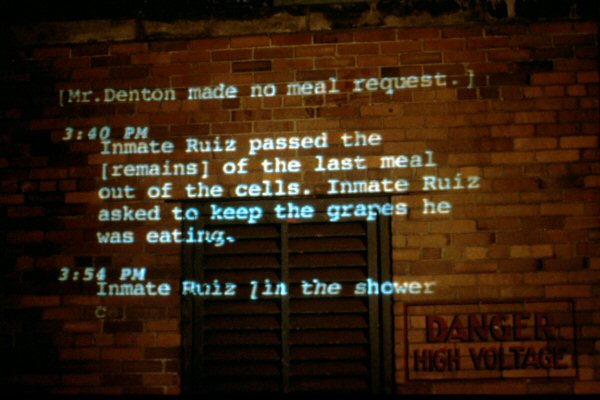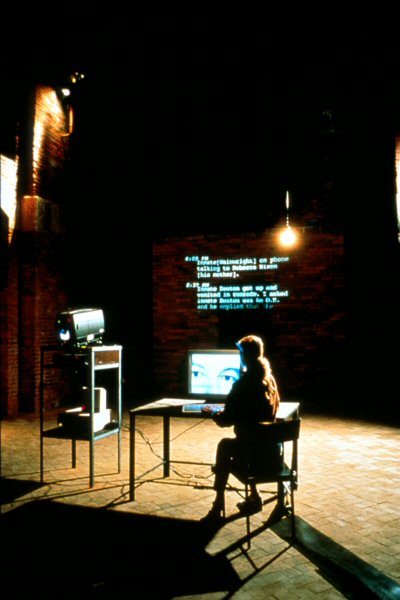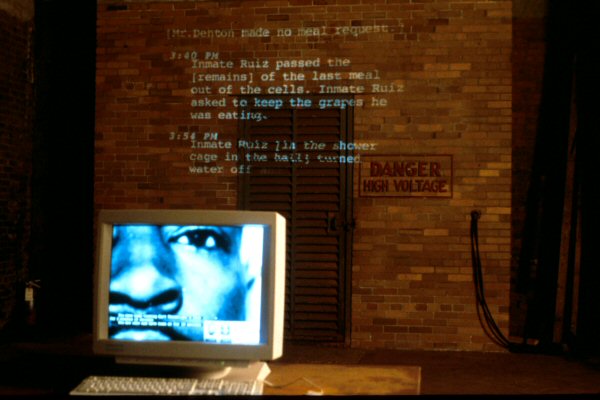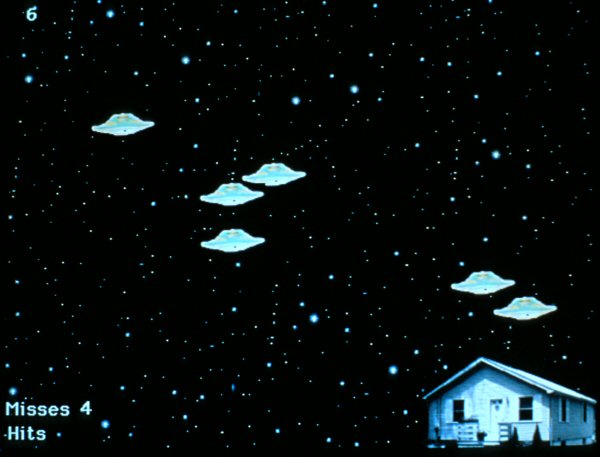Please wait a few moments while we process your request

Natalie Bookchin
Natalie Bookchin received a bachelor of fine arts degree from the State University of New York in 1984 and a master of fine arts degree in photography from the School of the Art Institute of Chicago in 1990. She now lives in Los Angeles where she is a faculty member at the California Institute for the Arts. She works collaboratively and independently and exhibits, performs and lectures widely in the United States and Europe and on the Internet.
In 2000, Bookchin earned an honorary mention in the .net category of the Prix Ars Electronica (Linz, Austria). She is currently working on a project with ®™ark (RTMark) for DNAid, an initiative developed by Creative Time and dedicated to exploring the cultural and social implications of genetic research.
Over the years, she has explored a political stance evident even in early works such as False Positive (Daisy) (1991). In this work, a piece that "incorporates petals from a flower in a he-loves-me-he-loves-me-not game, 23 brilliant red rectangles, alternatively labelled positive and negative, each frame a petal." (1) This wry look at a veritable health disaster signifies a trend to follow in her work.
Latter, Bookchin began to investigate how to manipulate photography and critique the media. She has collaborated with several artists during her career, notably Lev Manovich. Their three-piece work Digital Snapshots (1995) looks at digital photography and the possibilities for manipulating truth.
After experimenting with digital photography, Bookchin began to consider newer technologies such as the CD-ROM and the Internet as formal veins for her critical discourse. In 1996, she produced an interactive CD-ROM titled The Databank of the Everyday that relies on still photography of the human body, banal actions and movements, the idea of photography's documentary role, and the principles of the contemporary database.
"[The work] addresses the death of photography in the electronic age, where photography finds itself as just more data in a database. The project borrows its form from both a computer database and a stock photography catalogue. Following current rhetoric surrounding the computer, with its promise of an endless flow of information, Databank presents the ultimate databank, one with no conceivable limits: a databank of life itself." (2)
In 1997, Bookchin forayed into interactive computer and video installations with Marking Time (1997). In a dark room, a text is projected onto a wall letter by letter, describing the activities of three prisoners during the four days leading up to their execution in an Arkansas prison.
The visitor is invited to sit at a table with a computer and monitor, facing the projected text on the wall. On the monitor, one of the inmate's faces appears, and the visitor can navigate across this face while the computer records every click and sweep of the mouse across the prisoner.
The result is a motion study in the form of an abstract drawing. Visitors play the role of surveyor and surveyed, exacting control over the prisoner's body while having their own movements traced and captured by the computer. "The work also reflects on the ability of the computer to survey and record all choices and movements of any user at any time and parallels this to the model of the prisoner/prison guard." (3).
Besides publishing numerous articles on Internet art, culture and theory, Bookchin has turned her attention to game culture The Intruder (1999-2000) is her first Internet-based "game."
"The Intruder is an experimental adaptation of a short story by Jorge Luis Borges. The Intruder is the first project of its kind, a new hybrid form of narrative that exists on the border of computer and video arcade games, cinema and literature. The Intruder is an interpretative (re) reading of a text by Borges. I am using his short story, The Intruder (La Intrusa), a love triangle with a brutal and misogynistic ending, as an analogy for basic game narratives-invasion by an other/an alien (in this case a woman) who must be eliminated to bring about resolution and closure." (4)
While adopting the format and symbolism of the computer or video game, this work also deals with gender politics and stereotypes as played out in the traditional storyboard of the game. The Intruder has been presented from October 28 to November 25, 2000, at MonteVideo/TBA, the Netherlands Media Art Institute (Amsterdam, the Netherlands) as part of the exhibition Over_Game, a show dedicated to artists inspired by game culture.
In 2000, Bookchin earned an honorary mention in the .net category of the Prix Ars Electronica (Linz, Austria). She is currently working on a project with ®™ark (RTMark) for DNAid, an initiative developed by Creative Time and dedicated to exploring the cultural and social implications of genetic research.
Over the years, she has explored a political stance evident even in early works such as False Positive (Daisy) (1991). In this work, a piece that "incorporates petals from a flower in a he-loves-me-he-loves-me-not game, 23 brilliant red rectangles, alternatively labelled positive and negative, each frame a petal." (1) This wry look at a veritable health disaster signifies a trend to follow in her work.
Latter, Bookchin began to investigate how to manipulate photography and critique the media. She has collaborated with several artists during her career, notably Lev Manovich. Their three-piece work Digital Snapshots (1995) looks at digital photography and the possibilities for manipulating truth.
After experimenting with digital photography, Bookchin began to consider newer technologies such as the CD-ROM and the Internet as formal veins for her critical discourse. In 1996, she produced an interactive CD-ROM titled The Databank of the Everyday that relies on still photography of the human body, banal actions and movements, the idea of photography's documentary role, and the principles of the contemporary database.
"[The work] addresses the death of photography in the electronic age, where photography finds itself as just more data in a database. The project borrows its form from both a computer database and a stock photography catalogue. Following current rhetoric surrounding the computer, with its promise of an endless flow of information, Databank presents the ultimate databank, one with no conceivable limits: a databank of life itself." (2)
In 1997, Bookchin forayed into interactive computer and video installations with Marking Time (1997). In a dark room, a text is projected onto a wall letter by letter, describing the activities of three prisoners during the four days leading up to their execution in an Arkansas prison.
The visitor is invited to sit at a table with a computer and monitor, facing the projected text on the wall. On the monitor, one of the inmate's faces appears, and the visitor can navigate across this face while the computer records every click and sweep of the mouse across the prisoner.
The result is a motion study in the form of an abstract drawing. Visitors play the role of surveyor and surveyed, exacting control over the prisoner's body while having their own movements traced and captured by the computer. "The work also reflects on the ability of the computer to survey and record all choices and movements of any user at any time and parallels this to the model of the prisoner/prison guard." (3).
Besides publishing numerous articles on Internet art, culture and theory, Bookchin has turned her attention to game culture The Intruder (1999-2000) is her first Internet-based "game."
"The Intruder is an experimental adaptation of a short story by Jorge Luis Borges. The Intruder is the first project of its kind, a new hybrid form of narrative that exists on the border of computer and video arcade games, cinema and literature. The Intruder is an interpretative (re) reading of a text by Borges. I am using his short story, The Intruder (La Intrusa), a love triangle with a brutal and misogynistic ending, as an analogy for basic game narratives-invasion by an other/an alien (in this case a woman) who must be eliminated to bring about resolution and closure." (4)
While adopting the format and symbolism of the computer or video game, this work also deals with gender politics and stereotypes as played out in the traditional storyboard of the game. The Intruder has been presented from October 28 to November 25, 2000, at MonteVideo/TBA, the Netherlands Media Art Institute (Amsterdam, the Netherlands) as part of the exhibition Over_Game, a show dedicated to artists inspired by game culture.
Angela Plohman © 2000 FDL
(1) Patricia C. Phillips, "Natalie Bookchin - Franklin Furnace", ARTFORUM vol. 28 no 9 (mei 1991): 148.
(2) Natalie Bookchin, "Artist Statement: The Databank of the Everyday", Leonardo vol. 29 no 5 (1996): 409.
(3) Natalie Bookchin, Marking Time, August 30 2000.
(4) Natalie Bookchin, University of California, Los Angeles, July 10, 2000.
Related page:
 Creative Time Inc., DNAid
Creative Time Inc., DNAidAlmost immediately after its founding in 1973, Creative Time became an international leader in presenting new works by visual artists and performers.
External links:
California Institute for the Arts:
http://www.calarts.edu/
http://www.calarts.edu/
Lev Manovich :
http://www.manovich.net/
http://www.manovich.net/
Marking Time :
http://jupiter.ucsd.edu/~bookchin/marking_...
http://jupiter.ucsd.edu/~bookchin/marking_...
Natalie Bookchin:
http://www.bookchin.net
http://www.bookchin.net
Creative Time, New York:
http://www.creativetime.org/
http://www.creativetime.org/
Intruder, The:
http://www.calarts.edu/~bookchin/intruder/
http://www.calarts.edu/~bookchin/intruder/









